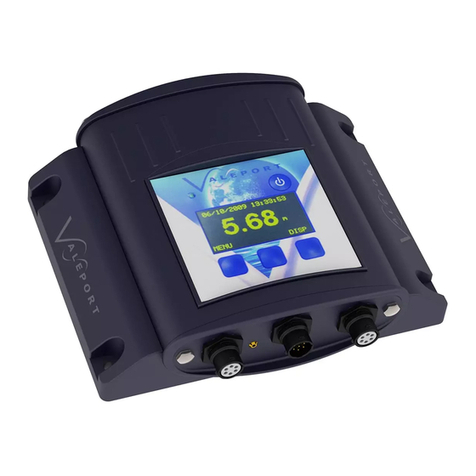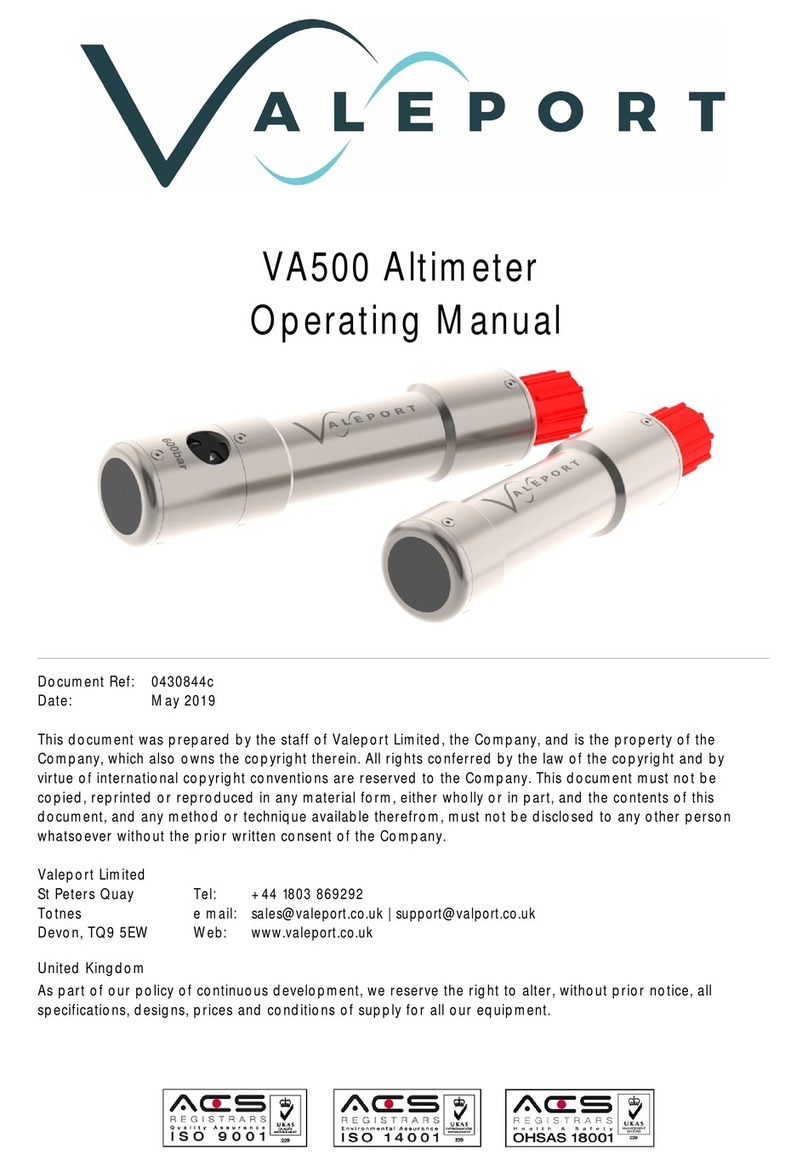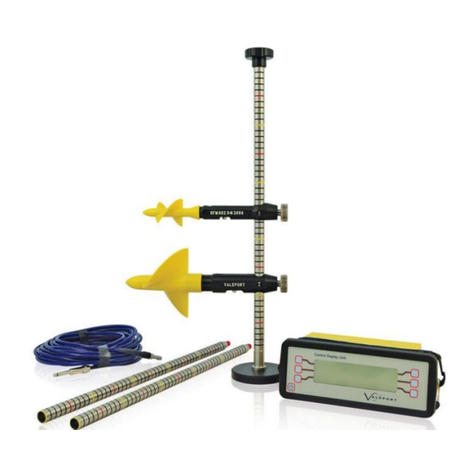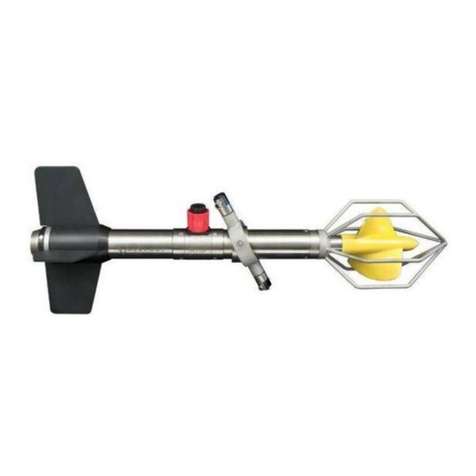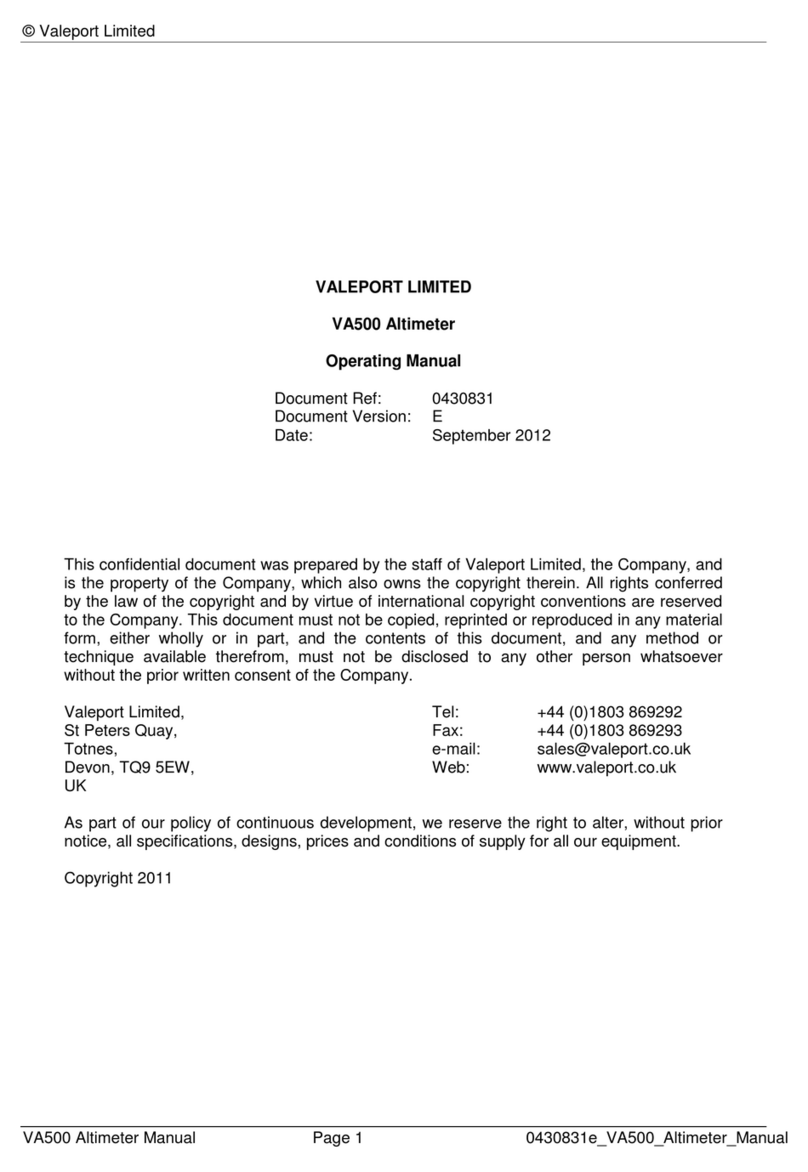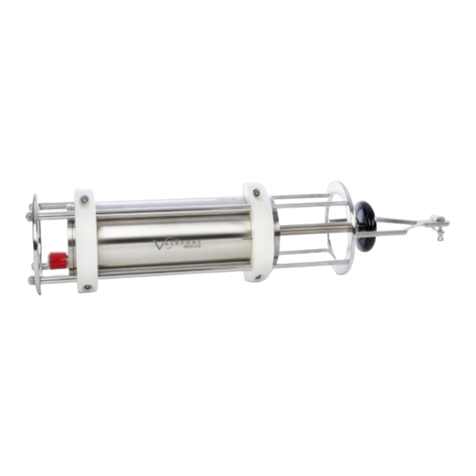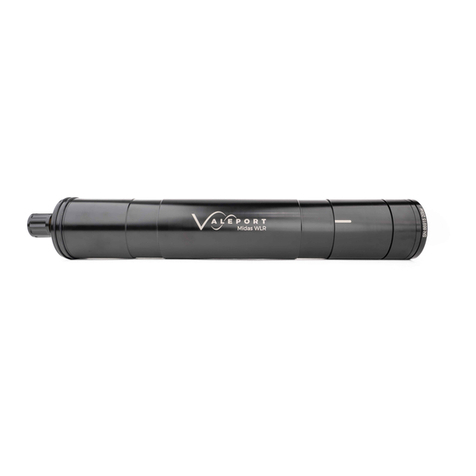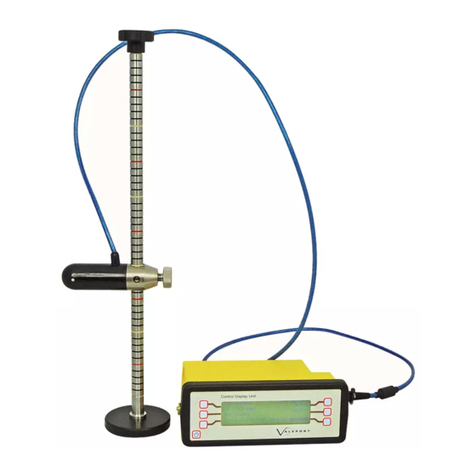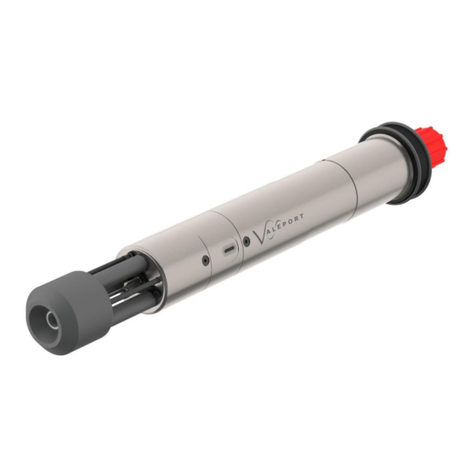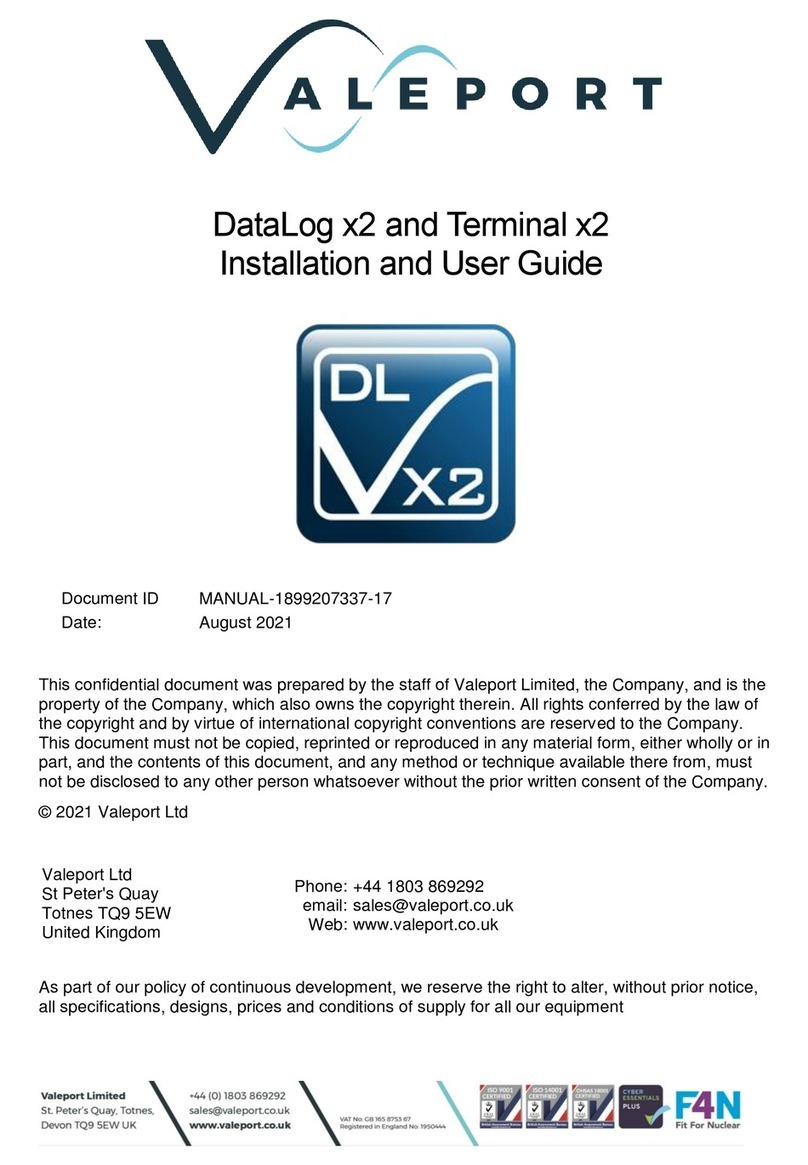Table of Contents
© 2018 Valeport Ltd Page 2
Table of Contents
..................................................................................................................................... 31. EU Declaration of Conformity - CE Marking
..................................................................................................................................... 52. Introduction - Hyperion Fluorometer
.................................................................................................................................... 52.1. Fluorophore & Nomenclature
..................................................................................................................................... 63. Sensors
.................................................................................................................................... 63.1. Fluorometers
3.1.1 Safety Statement
.................................................................................................................................... 6
3.1.2 Chlorophyll a
.................................................................................................................................... 6
3.1.3 Fluorescein.................................................................................................................................... 7
3.1.4 Rhodamine.................................................................................................................................... 7
.................................................................................................................................... 83.2. Linear Observation Range
.................................................................................................................................... 93.3. Quenching .................................................................................................................................... 103.4. Turbidity
3.4.1 Safety Statement
.................................................................................................................................... 10
..................................................................................................................................... 114. Data Acquisition
.................................................................................................................................... 114.1. Setting the Gain
.................................................................................................................................... 134.2. Output Rate .................................................................................................................................... 134.3. Functional Check
..................................................................................................................................... 175. Operation with MIDAS CTD+
..................................................................................................................................... 186. Electrical
.................................................................................................................................... 186.1. Connector Pin-Out
..................................................................................................................................... 197. Communications
.................................................................................................................................... 197.1. Data Output Formats
.................................................................................................................................... 207.2. Operating Modes
7.2.1 Mode C - Continuous
.................................................................................................................................... 20
7.2.2 Mode M - Continuous Measurement
.................................................................................................................................... 20
.................................................................................................................................... 217.3. Hash (#) Codes
..................................................................................................................................... 228. Physical Characteristics
.................................................................................................................................... 228.1. Dimensions
..................................................................................................................................... 239. Care and Maintenance
..................................................................................................................................... 2410. Software - DataLog x2
..................................................................................................................................... 2511. Ordering and Part Numbers
